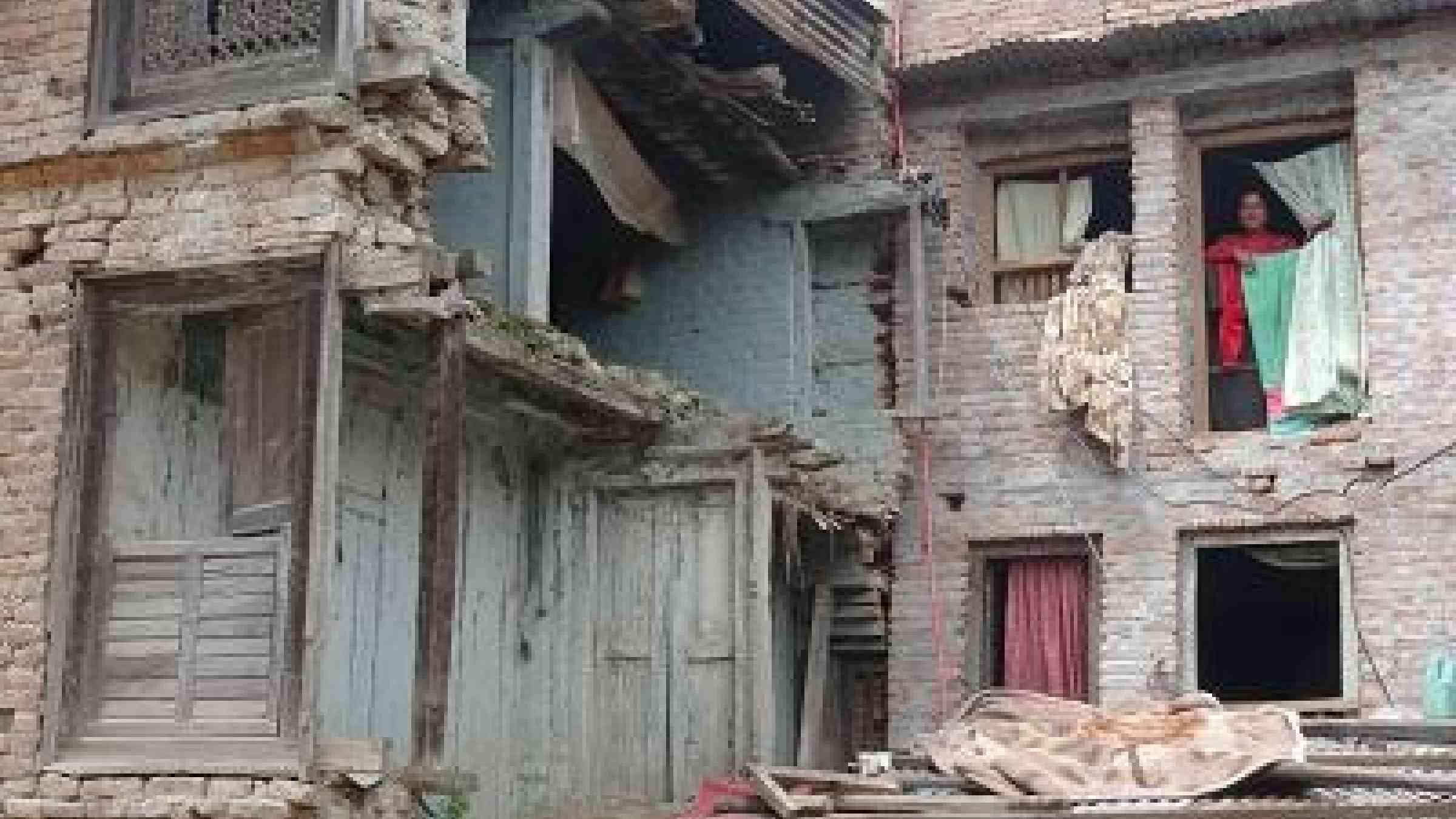Nepal earthquake recovery enters 5th year

A partly repaired house in the historic Bungamati district of the Kathmandu Valley
KATHMANDU, 25 April 2019 - An estimated 612,000 families are living in transitional shelter four years after the devastating earthquake which struck Nepal on April 25, 2015, killing 9,000 people, injuring 22,000 and destroying or damaging almost one million houses.
As though heralding the anniversary, three strong tremors were felt throughout the Kathmandu Valley yesterday but no major damage was reported.
Reconstruction is the focus of today’s local media coverage on the 4th anniversary of the Gorkha earthquake which was followed by another deadly tremor on May 12.
The Kathmandu Post leads with “Four years after Nepal’s deadly earthquakes, survivors continue to live in disarray” and the main headline in The Himalayan newspaper is “Pace of reconstruction taking forever to pick up.”
The Nepali Times has a striking photograph on its front page of a nine-floor high rise apartment building which clearly exceeds the height recommendations in the country’s seismic building code, underlining the challenge of enforcing implementation.
Economic losses from the earthquake were estimated at US$10 billion almost one-third of Nepal’s GDP.
The National Reconstruction Authority housing grant of US$3,000 to each affected family has still not been taken up by all those entitled to it and the Authority’s chairman, Mr. Sushil Gyewali, told the media that a further US$ 4.29 billion is needed “to complete reconstruction of structures devastated by the earthquake.”
The government’s Post-Disaster Needs Assessment estimated a need of US$ 9.38 billion for the five-year reconstruction and rehabilitation plan.
More than 1,000 health facilities and 5,000 schools were completely destroyed in 2015 and, but for the fact that the earthquake occurred on a Saturday, many thousands of children could have been killed.
UNESCO is involved with the government in a major campaign to restore the damage done to 700 temples, palaces and museums at seven world heritage sites, including 137 which totally collapsed.
While the Government has made progress in providing housing to 382,000 families with support from UN-Habitat and other partners, UN Resident Coordinator, Ms. Valerie Julliand, expressed concern for those who were the most vulnerable before the earthquake and whose needs have not been met.
“What is very striking in situations of emergency and earthquake and recovery is that the vulnerable population and those who are excluded from the society are always the most affected,” she said.
“During the earthquake these people were the most vulnerable. They were the ones whose houses were destroyed immediately. They were the ones who had really no fall back mechanism to be helped.
“When the process of reconstruction started, the process of recovery started, we also realized that the system put in place left them on the side because faced with the immensity of the task at hand the government had to take some measures to provide assistance to the largest number of people and in this endeavour those who were left behind, the most vulnerable ones continued to be left behind.”
Ms. Jarraud continued: “Their needs go much beyond a simple allowance of money. Their exclusions is at a different level and has different faces. The people that are excluded are excluded on the basis of their gender, their caste, of their ethnicity, they might not know how to read, they might not know how to seek support.
“In general what we see is that the most excluded in society are those that need the most attention from us.”
Meanwhile the government operates a feedback mechanism which registered 436,662 grievances from around the country regarding housing reconstruction including those who have not been able to start the reconstruction process for a variety of reasons including availability of suitable land.
Nepal is to inaugurate a new National Disaster Risk Reduction and Management Authority following the adoption of a new National Disaster Risk Reduction Policy in 2018 and a National Action Plan 2018-2030 aligned with the global plan to reduce disaster losses, the Sendai Framework for Disaster Risk Reduction.
Explore further
Also featured on
Is this page useful?
Yes No Report an issue on this pageThank you. If you have 2 minutes, we would benefit from additional feedback (link opens in a new window).